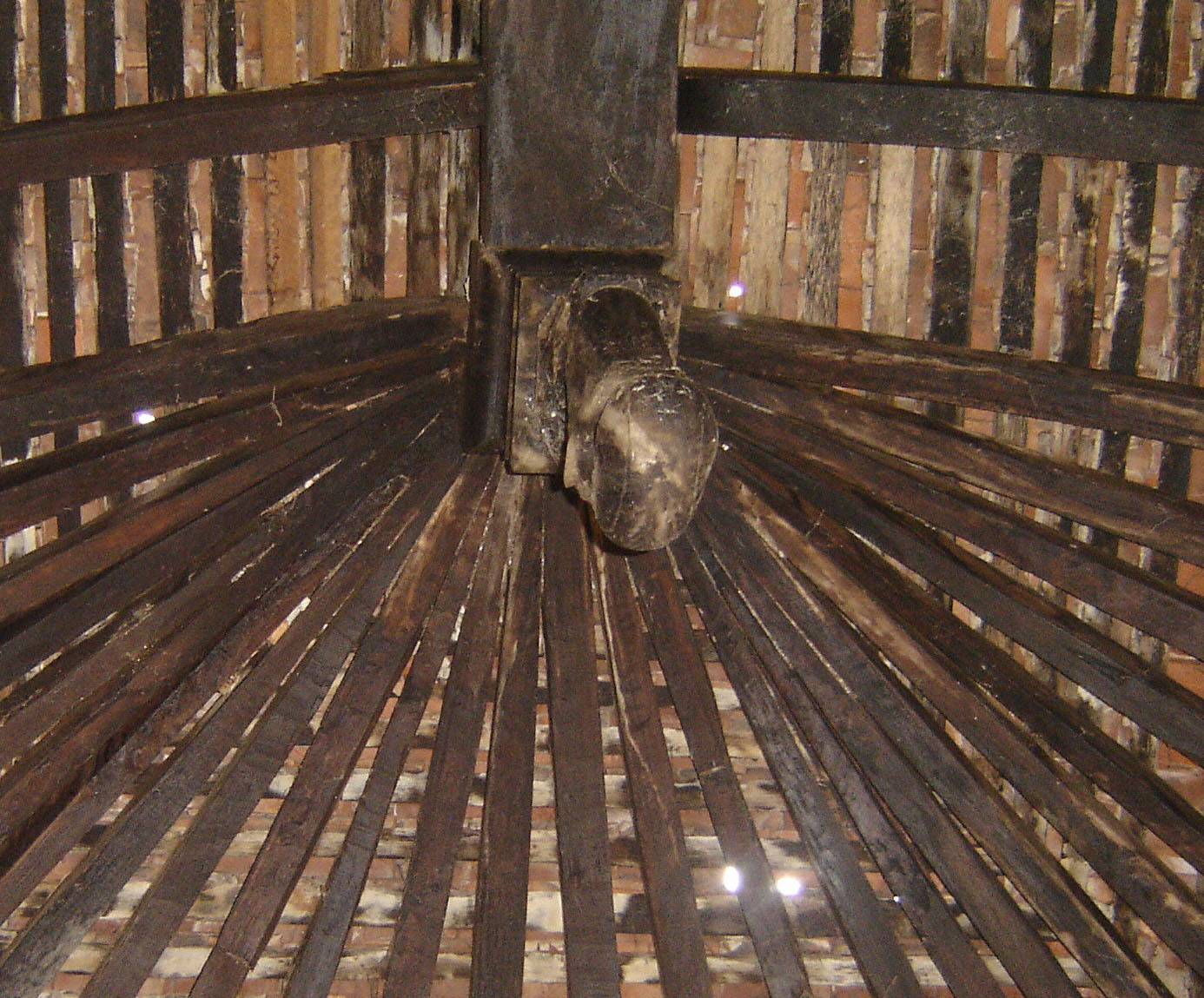Madol Kurupawa on:
[Wikipedia]
[Google]
[Amazon]
 Madol Kurupawa ( si, මඩොල් කුරුපාව) is a wooden
Madol Kurupawa ( si, මඩොල් කුරුපාව) is a wooden
king post
A king post (or king-post or kingpost) is a central vertical post used in architectural or bridge designs, working in tension to support a beam below from a truss apex above (whereas a crown post, though visually similar, supports items above f ...
or catch pin, which is used to secure numerous wooden beams of a roof structure to a single point. It is a unique feature of Kandyan architecture/joinery
Joinery is a part of woodworking that involves joining pieces of wood, engineered lumber, or synthetic substitutes (such as laminate), to produce more complex items. Some woodworking joints employ mechanical fasteners, bindings, or adhesives, ...
.
This distinctive structural arrangement occurs in medieval Sri Lankan buildings, where four pitch roofs have been provided. Rafter
A rafter is one of a series of sloped structural members such as wooden beams that extend from the ridge or hip to the wall plate, downslope perimeter or eave, and that are designed to support the roof shingles, roof deck and its associated ...
s of the shorter sides are elbowed against the ridge plate and were held fast at its pinnacle by a timber boss known as madol kurupawa, which in turn attached to the end of the wall plate
A plate or wall plate is a horizontal, structural, load-bearing member in wooden building framing.
Timber framing
A plate in timber framing is "A piece of Timber upon which some considerable weight is framed...Hence Ground-Plate...Window-plat ...
. The pekada provides an intermediate means of connection between the pillars and beams, where a modol kurupawa provides similar means between the rafters and ridge plate at shorter side of the pitched roof. No mechanical joinery (nails, bolts or glue) is used other than the wooden pegs and the structural stability is only achieved through compression.
The most notable example can be found at Embekka Devalaya
''Embekka Devalaya'' (Embekka Temple) was built by the King Vikramabahu III of Gampola Era (AD 1357–1374) in Sri Lanka. The Devalaya is dedicated to Kataragama deviyo. A local deity called Devatha Bandara is also worshiped at this site. The s ...
in Udunuwara, (built during the reign of King Rajadhi Rajasingha), where the upper ends of twenty six rafter
A rafter is one of a series of sloped structural members such as wooden beams that extend from the ridge or hip to the wall plate, downslope perimeter or eave, and that are designed to support the roof shingles, roof deck and its associated ...
s are held together using a modol kurupawa at the hip end of the 'Digge' (dancing hall). Another example can be found at the National Museum of Kandy.
See also
*Embekka Devalaya
''Embekka Devalaya'' (Embekka Temple) was built by the King Vikramabahu III of Gampola Era (AD 1357–1374) in Sri Lanka. The Devalaya is dedicated to Kataragama deviyo. A local deity called Devatha Bandara is also worshiped at this site. The s ...
* Pekada
External links
*Further reading
*References
{{Sri Lankan Architecture Timber framing Buddhist architecture Vernacular architecture Indigenous architecture Architecture in Sri Lanka